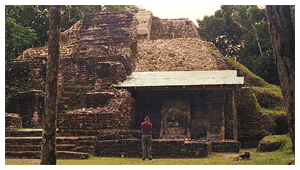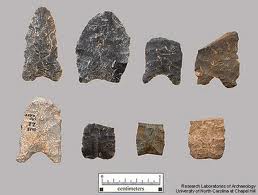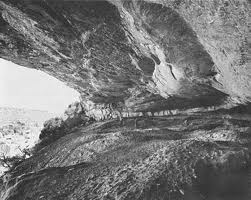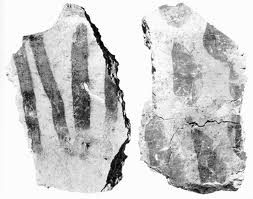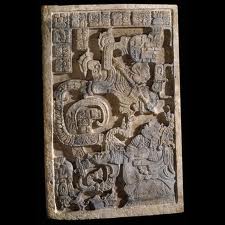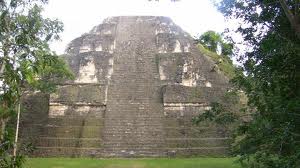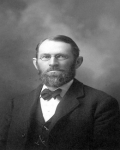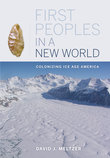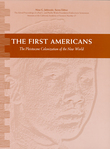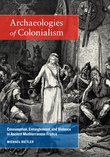- Latest Archaeology Updates
- Importance and applicability
- Famous Archaeologists
- Museums Collections
- Site Map
- World Heritage Sites
- World History Monuments
- Archaeological Organizations
- World Atlas of Archaeology
- Forensic Investigation and Geophysics
- Contact Us
- Movies based on Archaeology
- Frequently Asked Questions
- Archaeological discoveries
- Tell a Friend
- Archaeological Abbreviations
- Gallery Collections
- Famous-Museums site map
- Famous-archaeologists site map
- Archaeological Monuments site map
Archaeologists conduct research across the continent utilizing materials recovered from archaeological sites to piece together a narrative. Many of these sites have been preserved by cultural and professional organizations that prevent further damage from occurring as well as provide opportunities for visitors from around the world to experience and appreciate past civilizations. American archaeologists use a variety of methods including field survey, ground survey, as well as remote sensing techniques to detect, map, and monitor archaeological sites. Excavations are conducted in order to carefully record and preserve materials such as bones, ceramics, and lithics for analysis in the laboratory. Analysis of field and laboratory data often leads to further research questions and the formation of alternateworking hypotheses. This data often forms the foundation for a larger research project that can include scientific techniques such as radiocarbon testing and DNA analysis. In some cases, the data obtained can help support research into population movements or even political changes. intriguingand rewarding pursuit for the professional archaeological researcher. It is through their hard work and dedication that a better understanding of the past is obtained and secured for future generations.
Archaeology in Mesoamerica
Archaeology is the study of the past through the material remains left behind by ancient societies. In Mesoamerica, archaeology has been essential to understanding the history and culture of the region. It began in the 1930s when Ignacio Bernal and Eduardo Noguera unearthed evidence at Teotihuacan of a large pre-Hispanic city with a number of pyramids and other structures. Since then, archaeologists have used a variety of techniques and tools to excavate archaeological sites across the region and to analyze the artifacts they find. Mesoamerica's archaeological sites cover a broad range of time periods and provide evidence of the advanced civilizations that developed in Central America and Mexico. The earliest sites date back to around 8,000 BCE, and many of the most impressive sites are from the Classic Period (250-900 CE).
This was a period of remarkable cultural development, trade, and urban growth in the region. Archaeological sites like Palenque, Copan, and Uxmal are some of the best known from this period. Archaeologists have used a variety of methods to study Mesoamerican sites, including mapping techniques, excavation, and laboratory analysis. The artifacts that are recovered during an excavation can provide a wealth of information about the history, culture, and daily life of a civilization. This includes objects made from bone, stone, ceramics, textiles, andother materials, as well as architecture and monumental sculpture. By analyzing the objects, archaeologists can piece together a picture of the lives of people in a specific place and time. Archaeology has helped to piece together the history of the region and to fill in the gaps left by other sources. By studying the material remains, archaeologists have gained a much better understanding of the diets, livelihoods, religions, writing systems, and other aspects of ancient Mesoamerican societies. This has allowed us to gain a much clearer picture of the region's history, and to better understand the cultures of contemporary Mesoamerican peoples.
American Archaeological time periods:
The Lithic stage, also known as the Paleo-Indian period, is a archaeological period of North America that began approximately 15,000 years ago and lasted through 8500 BC. During this period, humans first began to inhabit the region and significantly affect the environment. Although the exact characteristics of early lithic stage populations remain largely unknown, due to a lack of physical evidence, it is hypothesized that the first native inhabitants of North America would have been nomadic hunter-gathers following large game such as mammoths, mastodons, and bison across the continent.
North Americans.The lithic stage peoples are believed to have used a variety of technological processes to create the tools that they needed.
The Archaic stage is a period in human prehistory that began approximately 8,000 to 11,000 years ago (c. 8,000-4,000 BCE) and lasted in some areas until the introduction of agriculture. This era is generally characterized by the rise of hunter-gatherer societies, which relied primarily on hunting and gathering techniques to obtain their nourishment. The advancement of tool technologies such as projectile weapons and refined stone tools, as well as incipient social and economic complexity, marks the start of the Archaic period.
Archaic cultures are distinguished by a variety of material remains, such as projectile points and blades used for hunting and cutting, ground stone tools for processing plant and animal products, pottery for the storage and transport of food, and ornaments such as carved shells and bone tools. In many regions, Archaic peoples also built megalithic structures, such as stone circles and cairns, in order to bury their dead and mark the significance of events or the passage of time.
The Formative stage is the first stage in the development of the human species. During this period, between two and five million years ago, a number of species of early humans first appeared in Africa. During this time, the species gradually diversified into a number of related species, such as Homo erectus, Homo neanderthalensis, and Homo sapiens. At this stage, the earliest specimens of the hominin family, known as australopithecines, appeared. These apes displayed a variety of traits that were shared by later species, such as a large brain case, the ability to walk on two feet, and the use of simple tool technology. During the Formative stage, humans began to establish camps and live in groups. This allowed them to develop more complex cultures and develop cooperatively with each other. The tools used at this stage were primitive by modern standards.
The classic stage of psychosocial development, proposed by Erik Erikson, has been widely accepted by modern psychologists. It is the second stage of Erikson's psychosocial theory, and is featured between the ages of 18 months to 3 years. During this time, the child begins to assert independence and autonomy and is usually able to walk, talk, and understand the world around them.
At this stage, the primary challenge that the child must face is to develop a sense of autonomy by overcoming challenges from the world around them. This stage of development is also known as the "Terrible Twos" due to the common behavior of toddlers to act out and test limits. The child must learn to do things on their own, such as dressing themselves, feeding themselves, and using the bathroom. If the child is successful in this stage, they will gain a sense of autonomy and independence, as well as a trust in themselves. If they are unsuccessful, they will feel overly dependent and experience feelings of shame and doubt.
The Post-Classic stage (900-1521 CE) is a period of Mesoamerican history characterized by the existence of large centralized states, similar to the ones of previous Classic periods. During this period, the Maya, Toltecs, Aztecs, and Mixtecs dominated the Mesoamerican region. The Post-Classic period began with the fall of the Classic period culture around 900 CE and continued until the arrival of the Spanish in 1521 CE. The Post-Classic period is recognized as a time of great changes in political, economic, social, and cultural aspects of Mesoamerican societies.
Political systems during the Post-Classic period were varied but tended to be more centralized than in the earlier Classic period. The most influential states in the region were the Aztecs and the Mixtecs, although there were some other significant states such as the Tarascans and Pipiles. These states, with the exception of the Pipiles, were highly militarized and made use of systematic taxation and taxation-in-kind systems. In addition, they utilized a system of alliances to extend their political and economic control, often through the use of military force.
Humans entering the Americas
Humans first began entering the Americas around 15,000 years ago. This is around the same time hunter-gatherers began leaving Africa and migrating around the world. Many theories exist as to the precise routes of how these nomadic people moved north into the Americas, but it is commonly believed that they crossed the Bering Land Bridge from Siberia to Alaska, and then moved south through a series of corridors that had opened up between the massive glaciers that covered most of the Americas. As they moved further south, these nomadic bands of hunter-gatherers began to settle and diversify due to diverse climates, topography, and ecology. It is believed that certain groups of Indigenous peoples made their way all the way to South America, and eventually engaged in regular trade with other Indigenous peoples such as the Puebloans and Aztecs. Different groups of Indigenous peoples developed ways of life that reflected their unique surroundings, and established deep-rooted spiritual and cultural beliefs that remain powerful to this day.
Pre-Columbian era
The Pre-Columbian era marks the period before the arrival of Christopher Columbus to the Americas in 1492. It can be broken down into five distinct Ancient cultures: the Olmec, Maya, Inca, Aztec, and Mississippian. The Olmecs, known to be the "mother culture" of the Americas, lived in the tropical lowlands of south-central Mexico beginning around 1500 BC. These people created sophisticated art and sculptures, some of which are considered masterpieces of Mesoamerican art. As well as being known for their art, they developed architecture, astronomy, and of course, advanced mathematics, which included the "counting calendar". The Maya had one of the most advanced civilizations built between 1000 BC and 900 AD. They developed a complex system of writing, developed markets, and built cities with impressive stone architecture. The Maya are also known for being the first to develop a universal would-be calendar complete with sky-mapping methods. They also practiced a variety of religion and belief systems. The Mayan calendar is still widely used today.
Famous Archaeologists in Region of America:
Books on the American Archaeology:
At the end of the Ice Age, the first humans arrived in America from Siberia via the Bering Land Bridge. These hunter-gatherers spread across the continent, adapting to the land and forming diverse cultures. As climates changed, humans innovated to survive, and new cultures emerged, laying the foundation of the culturally-diverse first peoples of America.
The First Americans - The Pleistocene Colonization of the New World
:
~20,000 years ago, the first humans made their way across the Bering Land Bridge from northeast Asia into North America, dispersing through the continent and eventually colonizing the entire New World. These pioneers, known as the First Americans, remained isolated for the vast majority of the Pleistocene period, allowing their culture to develop in relative peace. Eventually, they began to exchange technologies and ideas between the various tribes, leading to an increase in population and expansion across the massive continent.
Archaeologies of colonialism are studies that focus on the material culture which is a result of contact between colonial and indigenous people. It explores how the interactions between these two groups resulted in particular material practices. This includes examining the social, political, symbolic and technological influences that shape how people persisted and negotiated in colonial contexts. Through looking at material evidence, archaeologists of colonialism provide insights into how social power relations between colonists and Indigenous people are embodied in the remains of their interactions.
Rich Resources over the web on Amerian Archaeology
- American Archaeology :
In The Southeast American archaeology in the Southeast is a field of research focusing on the prehistory, history, and heritage of the Native American and early colonial peoples of this region. It is best known for its work in reconstructing the prehistory of the region, particularly the chronology and cultural development of the ancient Mississippian culture and its successors. Research in the Southeast continues to address a wide range of topics, including the archaeology of warfare, gender and social dynamics, cuisine, material culture, and religious and ritual practices. Increasingly, archaeologists also examine the historical relationships between Native Americans and the colonial settlers who moved into the region in the centuries after the first contact period.
- Society of American Archaeology :
The Society for American Archaeology (SAA) is an international nonprofit organization dedicated to the research, interpretation, and protection of the archaeological heritage of the Americas. Founded in 1934, the SAA brings together professionals, students, avocational archaeologists, and partners to advance knowledge and stewardship of the past. The SAA advocates for the preservation of archaeological sites, encourages ethical research and stewardship, and works with diverse groups to foster a shared commitment to protecting and interpreting the archaeological record. The SAA provides education, professional development, networking, and advocacy tools to support archaeological research, preserve cultural heritage, and promote public understanding of the field. Through its quarterly journal, American Antiquity, the SAA disseminates archaeological scholarship to diverse audiences.
-
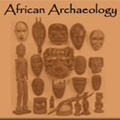
African Archaeology is the study of the history and prehistory of the African continent, as well as its societies and cultures, through the use of archaeological evidence. African Archaeology covers a broad range of topics, from the Stone Age to the present day. -
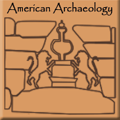
American Archaeology also known as New World archaeology, is the study of the archaeological history and prehistory of the Americas. It is a subfield of archaeology, the study of the human past, which seeks to understand societies and cultures by examining their material culture, such as artifacts and ruins. -
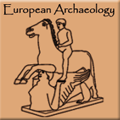
European Archaeology is the scientific study of the material remains of past cultures and societies in Europe, from the Paleolithic period to the present day. It is an interdisciplinary field which draws on the methods and theories of a range of disciplines, including history, anthropology, art history, geography, geology and linguistics -
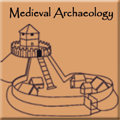
Medival archaeology is a field of archaeology that is primarily concerned with the material remains of the Middle Ages, which is roughly defined as the period from the 5th to the 15th century. -
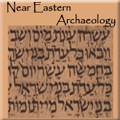
Near Eastern Archaeology is the study of the material culture found in the Near East, a region of Eurasia that covers the Middle East, North Africa, and parts of Central Asia. The region is often referred to as the cradle of civilization, as it is the site of some of the earliest known civilizations, including the Sumerian, Babylonian, and Assyrian empires. -
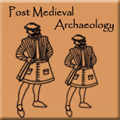
Post Medieval Archaeology is the study of the period from the 15th century to the 19th century. It is a period of great change and transformation, with the rise of nation states, the onset of industrialization and the spread of global trade. Archaeological evidence from this period reflects the development of these changes and the impact they had on everyday life. -

Modern Archaeology is the study of human activity in the past using the material remains of a culture. It is a subfield of anthropology that includes the study of artifacts, architecture, landscapes, and cultural landscapes. It is a scientific approach to the study of past cultures and societies, and often involves excavation, laboratory analysis, and other research method

